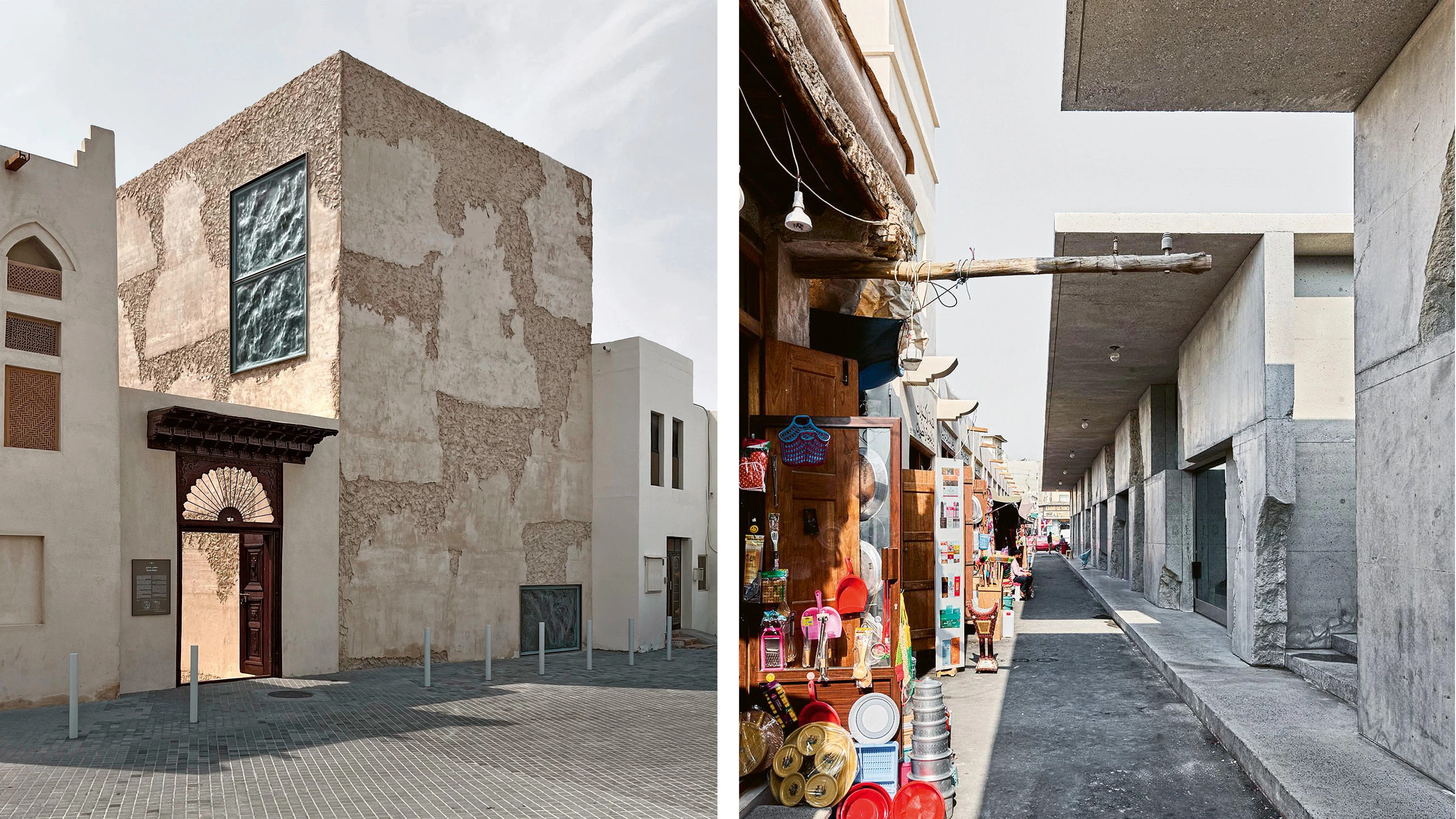
Izda: Anne Holtrop, Siyadi Pearl Museum © Guillermo Solana. Dcha: Anne Holtrop, Qaysariyah Souk © Anne Holtrop
Bizet set Les Pêcheurs de perles in Ceylon, but could have chosen another island in the Indian Ocean to situate the story of its two fishermen: Bahrain, thub of an ancestral pearl market – mentioned in Assyrian texts – that was the pillar of the local economy until the rise of oil in the second half of the 20th century. Despite its decline, the country remains a proud source of natural pearls, which are scarcer and thus more valuable than cultured pearls, which form inside mollusks with human assistance, speeding up the process and yielding more pearls. Benefiting from shallow waters where bivalves abound, the city of Muharraq flourished in this trade in the 19th century, not far from the capital, and proof is a quarter that still maintains some old warehouses, bazaars, and merchants’ residences. In 2012, seventeen buildings were declared World Heritage Sites, which encouraged the country’s Cultural Authority to bring out its pearling tradition in all its glory by stringing together a path through the sites, in the process invigorating the urban center.
A key role was played here by Noura Al Sayeh, head of architectural affairs of the Bahrain Authority for Culture and Antiquities, whose painstaking revamp of the historical core merited the 2019 Aga Khan Award (Arquitectura Viva 218). Knowing, too, that the city could not allow itself to become a fossilized vestige of the past, she has also overseen contemporary projects, many of which have managed to attract international talent to this corner of the Gulf: from Valerio Olgiati, designer of the grave visitor center (Arquitectura Viva 219), to Christian Kerez, who raised four parking garages of fluid forms (Arquitectura Viva 263), and along the way the firm OFFICE, which dotted the streets with urban furniture and built a veiled music center (AV 232). They are joined by Anne Holtrop, a Dutch architect whose practice has a branch in Muharraq and among whose numerous projects are the already completed revitalization of the souq and the restoration of the ancestral house of a Muharraq family of notables, with an exquisite majlis that is now a museum of equally exquisite pearls.






